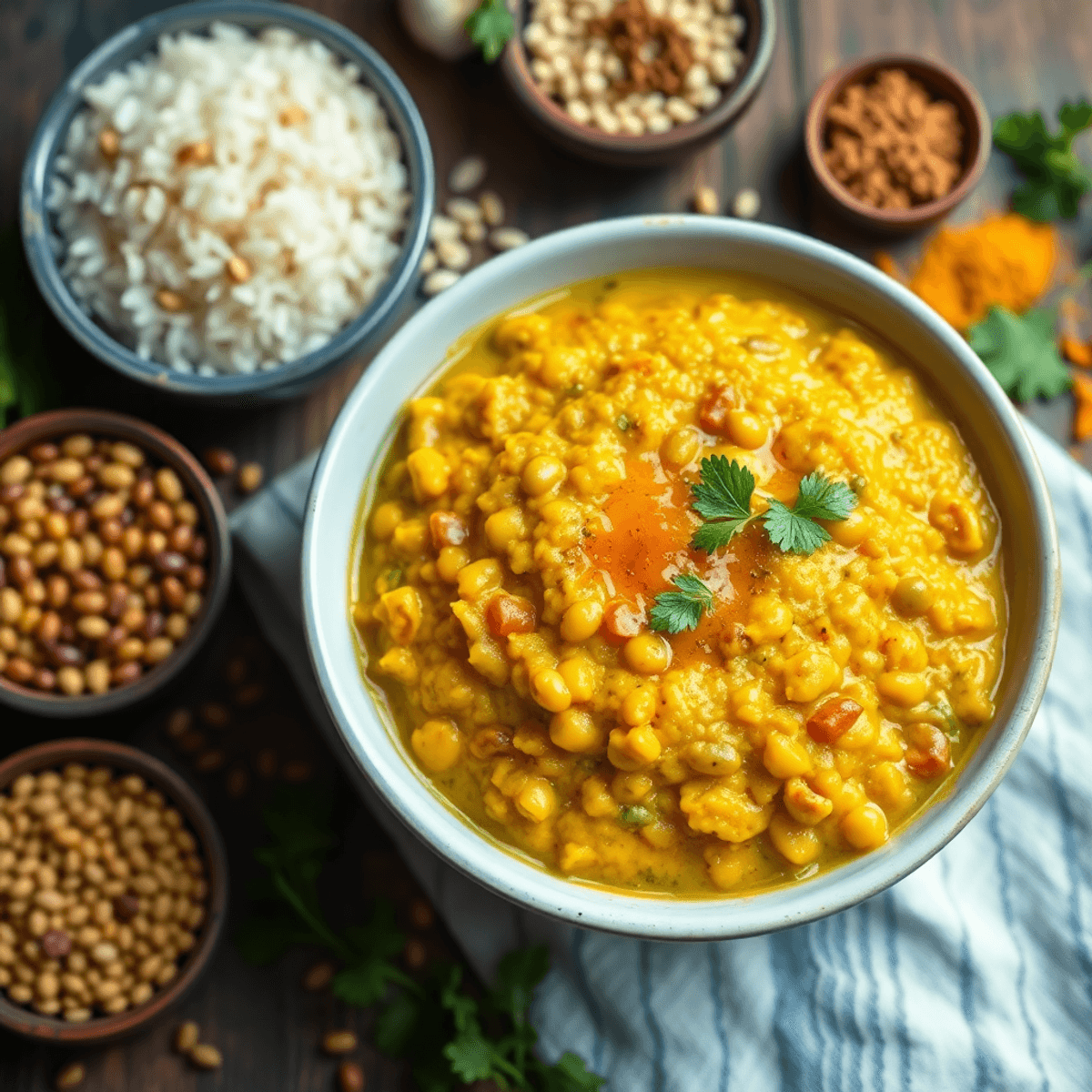Train Your Brain to Enjoy New Tastes with These Simple Tricks
Have you ever wondered why some foods taste amazing to you while others make you cringe? Your brain plays a fascinating role in determining what ends up on your "delicious" list, particularly through the process of taste perception in the brain. Just like learning a new language or skill, you can train your brain to appreciate and love new flavors.
Understanding the Role of Your Brain in Taste Perception
Think of your taste buds as students, ready to learn and expand their horizons. Through mindful eating practices and repeated exposure to different foods, you can transform your relationship with previously challenging ingredients. The secret lies in understanding how your brain processes taste perception in the brain and implementing simple techniques to rewire those responses.
Exploring Sweetness: The Power of Erythritol
A great way to start this journey is by experimenting with different types of sweeteners. For instance, erythritol, a sugar-free substitute, has been gaining popularity due to its various benefits and suitability for those on keto or diabetic-friendly diets. Incorporating such alternatives can help you enjoy sweets guilt-free while also training your brain to accept new flavors.
Expanding Your Palate: Discovering Traditional Indian Sweets
Ready to embark on a flavor adventure? Let's explore how incorporating real, whole ingredients and practical strategies into your daily routine can open up a world of culinary possibilities you never thought possible. For example, indulging in traditional Indian sweets like Kaju Katli and Motichoor Ladoo can be a delightful experience that broadens your palate. These treats are not only delicious but also cater to various dietary needs such as being gluten-free or sugar-free.
Understanding the Brain-Food Connection
Your brain processes taste through a fascinating network of neural pathways. When you take a bite, taste buds send signals to specific areas in your brain, creating a complex flavor perception that combines:
- Chemical sensing - detecting sweet, sour, salty, bitter, and umami
- Texture recognition - processing mouth-feel and consistency
- Memory association - linking tastes to past experiences
- Emotional response - creating feelings about specific foods
The magic happens through repeated exposure. Each time you try a new food, your brain forms neural pathways that become stronger with practice. Think of it like learning a new language - the more you practice, the more natural it feels.
Research shows it takes about 8-15 exposures for your brain to adapt to unfamiliar tastes. This explains why children who initially reject certain vegetables often grow to enjoy them after multiple tastings. Your brain's natural plasticity allows it to rewire its response to new flavors, transforming initial aversion into genuine appreciation.
In this context, exploring a variety of foods can significantly aid in this adaptation process. For instance, trying out some of the best-selling sugar-free sweets from Artinci, which include an array of cakes, cookies, and Indian sweets, could provide delightful experiences that help reshape your taste preferences.
The Influence of Texture on Flavor Perception
Your brain processes texture and taste simultaneously, creating a complex sensory experience that shapes your food preferences. Think about biting into a crispy apple versus eating applesauce – while the flavor remains similar, the eating experience differs dramatically.
Texture plays a vital role in:
- Mouthfeel satisfaction - The way food feels in your mouth can trigger pleasure or aversion responses
- Flavor release - Different textures affect how quickly taste compounds reach your taste buds
- Memory association - Texture creates lasting impressions that influence future food choices
Understanding texture preferences can help you overcome food aversions. If you dislike mushrooms' sponginess, try them crispy and roasted. Can't stand the smoothness of avocados? Try them mashed with chunky vegetables.
The key lies in texture transformation. Many foods can be prepared with different textures while maintaining their nutritional benefits:
- Steamed vegetables vs. roasted vegetables
- Pureed soups vs. chunky stews
- Raw nuts vs. nut butters
By experimenting with various cooking methods and food preparations, you can discover textures that make new foods more appealing to your palate.
Incorporating sugar-free sweeteners into your diet can also help manage certain food textures and flavors. For those on specific dietary plans like keto or gluten-free, exploring options such as our Almond Cake, which is sweetened with stevia and perfect for a keto-friendly diet, could be beneficial.
Overcoming Food Aversions Through Open-Mindedness
Food aversions often come from negative past experiences or preconceived ideas. To overcome these mental barriers, you need a strategic plan to retrain your brain.
Practical Steps to Transform Food Aversions:
- Start with small portions mixed into familiar dishes
- Focus on the positive qualities of new foods
- Create enjoyable dining environments to build positive associations
- Challenge negative beliefs about specific ingredients
Your mindset plays a crucial role in how you perceive taste. Research shows that approaching new foods with curiosity instead of fear can greatly improve your eating experience.
Consider documenting your food journey through photos or a taste diary. This practice helps track progress and celebrate small victories as you expand your palate.
Quick Tips for Success:
- Pair unfamiliar foods with favorite flavors
- Experiment with different cooking methods for challenging ingredients
- Set realistic goals - aim to try one new food each week
- Remember that taste preferences can change with repeated exposure
The key is to create positive associations with new foods while maintaining a growth mindset about your cooking abilities.
The Importance of Real Ingredients in Flavorful Cooking
Real ingredients create a symphony of authentic flavors that processed foods simply can't replicate. Each whole ingredient brings its unique character to your cooking:
- Natural Complexity: Fresh herbs release aromatic compounds that dance on your tongue
- Pure Flavors: Unprocessed vegetables maintain their inherent sweetness and mineral notes
- Rich Textures: Whole grains offer satisfying chewiness and nutty undertones
The magic of real ingredients extends beyond taste - they nourish your body at a cellular level, influencing taste perception in the brain. A fresh tomato delivers lycopene, vitamin C, and potassium in their most bioavailable forms. These natural compounds trigger satisfaction signals in your brain, reducing cravings and creating genuine enjoyment of wholesome foods.
Your body recognizes and responds to these natural compounds in ways it can't with artificial alternatives. This biological recognition triggers satisfaction signals in your brain, reducing cravings and creating genuine enjoyment of wholesome foods.
Cooking with real ingredients also helps develop a deeper connection with your food. You'll notice subtle seasonal variations in produce, appreciate the distinct characteristics of different olive oils, and discover how ingredients interact to create memorable meals.
Moreover, incorporating healthier alternatives like monk fruit as a sweetener can be beneficial for those managing dietary restrictions while considering taste perception in the brain. Jaggery, which contains fewer empty carbs and has a lower glycemic index compared to sugar, could serve as a healthier substitute.
Getting Creative with Whole Ingredients: Recipes to Try
Let's explore some delicious recipes that make incorporating whole ingredients an exciting culinary adventure:

Vegetarian: Moong Dal Khichdi with Ghee-Tadka
Why it works: Balanced, easy to digest, and packed with protein and fiber.
Ingredients:
- Whole moong dal (green gram)
- Brown rice or millets (like little millet or foxtail millet)
- Fresh vegetables (carrot, beans, bottle gourd)
- Ginger, garlic, turmeric
- Cumin, ghee, and asafoetida (hing) for tadka
- Fresh coriander and lemon for garnish
Health Highlight: This one-pot comfort meal is rich in plant-based protein, gut-friendly, and can be made without any processed ingredients. A go-to for light, nourishing dinners.

Non-Vegetarian: Chicken Sukka (Dry Chicken Masala)
Why it works: Uses real spices, no cream or refined ingredients, and pairs well with wholesome sides like jowar roti or red rice.
Ingredients:
- Free-range chicken
- Freshly ground coconut, ginger, garlic
- Curry leaves, dry red chilies, black pepper
- Mustard seeds, turmeric, and coriander powder
- Coconut oil
Health Highlight: A traditional dish that’s high in protein and healthy fats from coconut. Richly spiced and satiating, without relying on heavy oils or artificial flavoring.
Experimentation and Patience: The Keys to Expanding Your Palate
Developing a diverse palate requires a mindset shift - think of yourself as a food explorer on an exciting journey of discovery. Your taste preferences can evolve through strategic experimentation:
- Start Small: Mix tiny amounts of new ingredients into familiar dishes
- Play with Temperature: Try foods both hot and cold to find your preferred way
- Experiment with Preparation: Steam, roast, or sauté - different cooking methods create unique flavor profiles
Remember that it takes an average of 10-15 exposures for your brain to adapt to new tastes. Some tips to make the process easier:
- Keep a food journal to track your progress
- Celebrate small wins when you discover new favorites
- Take breaks between trying challenging foods
- Focus on one new ingredient at a time
Your brain's neural pathways strengthen with each exposure to unfamiliar flavors. This biological process can't be rushed - it's like learning a new language or instrument. The key lies in consistent, gentle exposure rather than forcing yourself to eat large quantities of foods you currently dislike.
Conclusion
Your journey to discover new tastes is a powerful path to better health and richer culinary experiences. Each bite of real, whole ingredients opens doors to unexpected flavors and nourishes your body in profound ways.
However, if you're feeling overwhelmed or frustrated with the process, remember that it's okay to take a step back and approach it at your own pace. Listen to your body and intuition as you explore new flavors, and don't hesitate to seek guidance from professionals like nutritionists or chefs for support along the way.
Ready to embrace new flavors while making healthier choices? Discover Artinci’s delicious range of sugar-free products and satisfy your sweet tooth—guilt-free! Explore our collection today and experience real taste without the sugar. Try Artinci now!
Disclaimer: The information provided in this article is for educational purposes only and should not be taken as medical advice. Please consult with a healthcare professional before making any dietary changes, especially if you have any underlying health conditions.
FAQs
1.How does the brain influence our perception of taste and enjoyment of new flavors?
The brain plays a crucial role in interpreting taste and texture, which directly affects how we perceive and enjoy different flavors. By understanding this brain-food connection, we can train our brains through repeated exposure to appreciate unfamiliar tastes and expand our palate.
2.Why is texture important in flavor perception and food enjoyment?
Texture significantly impacts how we experience food, as it can enhance or hinder flavor perception. Different textures can alter the way flavors are perceived by the brain, making it an essential factor to consider when trying new foods or training your brain to love new flavors.
3.What strategies can help overcome food aversions and encourage trying new dishes?
Overcoming food aversions involves adopting an open-minded approach to culinary experiences. Being willing to try a variety of dishes with different ingredients and textures can retrain your brain to enjoy new flavors, ultimately broadening your dietary preferences.
4.Why are real, whole ingredients important for flavorful cooking and health?
Using whole, unprocessed ingredients is vital because they not only enhance the complexity of flavors but also provide essential nutrients that nourish both the body and mind. Real ingredients contribute to more delicious meals while supporting overall health and well-being.
5.How can experimentation and patience aid in expanding one's palate?
Experimentation allows you to explore diverse cuisines and ingredients, preparing your taste buds for unfamiliar foods. Patience is key because developing a more varied palate takes time as your brain gradually adapts to new tastes and textures through consistent exposure.


